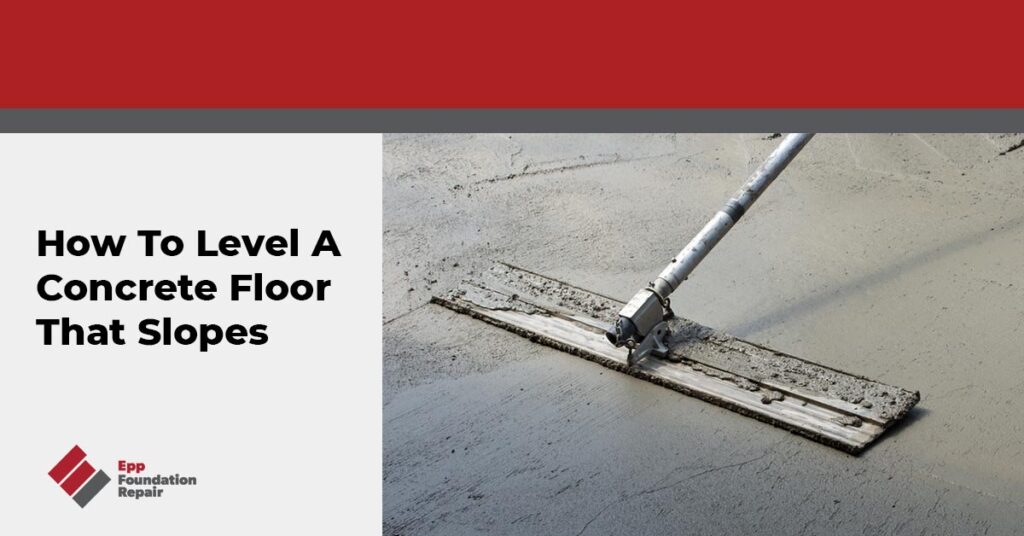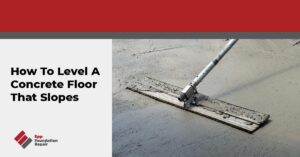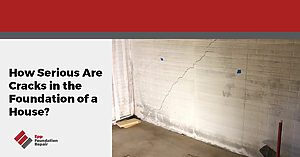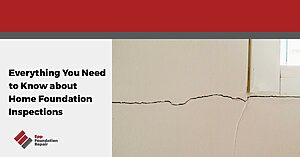If you’re looking for information on how to level a concrete floor that slopes, don’t hit that back button because that’s what we’re going to talk about in this short article. We’re going to go over the first thing you need to do when your concrete floor is sloping, why foundations settle, signs your house might be experiencing foundation settlement, and more.
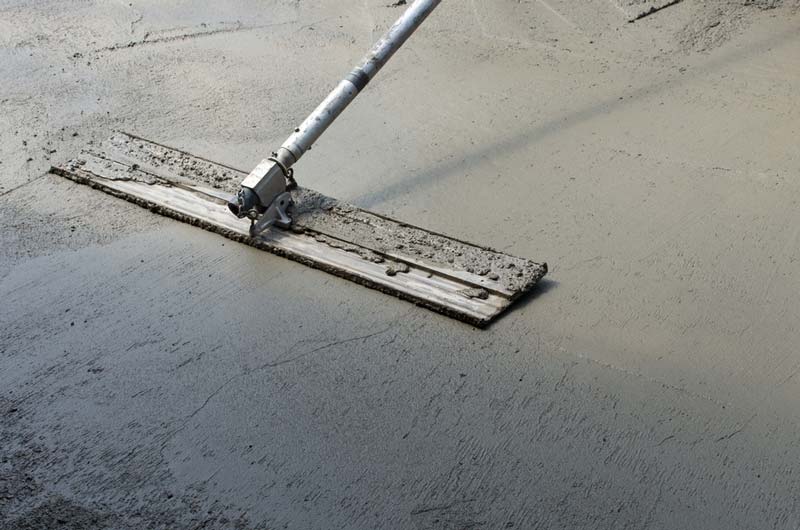
First Things First: Why Is The Concrete Floor Sloping?
If you want to know how to level a concrete floor that slopes the first question you need to answer is: Why is the floor sloping? Is the floor sloping because the concrete floor was improperly poured or is the floor sloping because of foundation settlement? The answer to this question is crucial because it will determine how to level a concrete floor that slopes.
If the concrete floor – or any floor – is sloping because the foundation is experiencing differential settlement, you’ll need foundation repair. In other words, the problem isn’t with the concrete. The problem is with the building’s foundation and if so, you don’t want to make the mistake of thinking the problem is related to the concrete floor. A sloped floor of any kind is a common sign of differential foundation settlement.
What Is Differential Settlement And Why Does It Cause Sloping Floors?
Differential foundation settlement is when a structure’s foundation is settling into the soil unevenly. All structures will settle slightly into the soil after their built. As long as the settlement is uniform, there’s no reason to worry. However, differential settlement is another matter. Differential foundation settlement puts a lot of stress on a foundation because everything is out of plumb. You’ll notice things like sloped floors, cracks in walls, floors, and ceilings, stairstep cracks in brickwork, and doors and windows that don’t open and close properly. See the illustration below for more information.
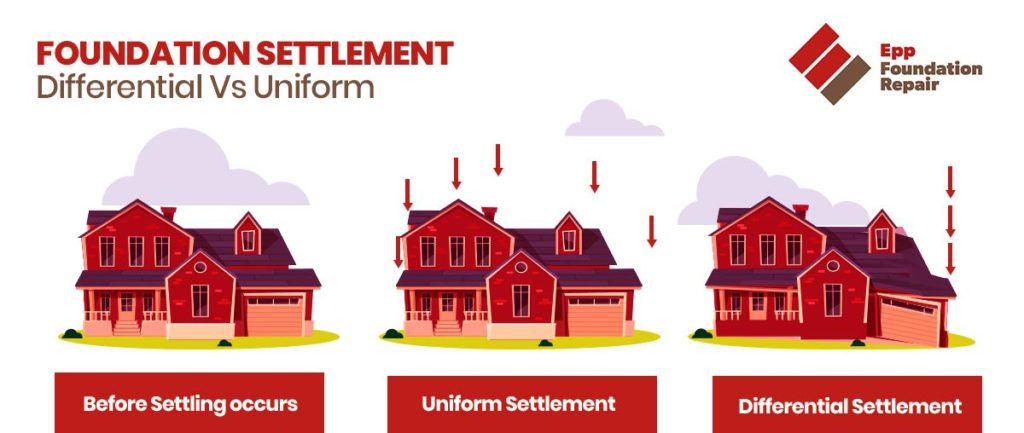
Why Do Foundations Settle?
Foundations can experience differential settlement for various reasons including:
- Soil that wasn’t adequately compacted before construction started – Soiled needs to be tamped down before anything gets built on top of it. If this isn’t done, the structure will settle into the soil after it’s built, usually unevenly leading to differential settlement.
- Problems related to expansive soil – Soil with a high percentage of clay in it is called “expansive” because it swells when it soaks up water and then shrinks when it dries out. This swelling-shrinking cycle – which is usually seasonal – creates movement under the foundation. This can, over time, lead to differential settlement.
- Weather changes – Let’s say you build a foundation on expansive soil during the dry season. What’s going to happen when the wet season rolls around again? The soil will expand under the foundation.
- Excavation next to the foundation – Heavy excavation next to a building can destabilize the soil under the building’s foundation leading to differential settlement.
- Natural disasters – Earthquakes, floods, tornados, etc. can all cause foundation settlement.
Don’t Use Self-Leveling Compound If The Problem Is Settlement
Many “how to” articles about how to level a concrete floor that slopes recommend using self-leveling compound to level a sloped concrete floor. This could work if the problem with the floor is the concrete itself. For example, if it was improperly poured. However, using self-leveling compound thinking it’s going to level a concrete floor that’s sloping due to foundation settlement is a bad decision. While your repair might look OK for awhile, the problem will return because the problem isn’t the concrete, it’s the foundation. So, always find out why the concrete floor is sloping before you do anything else.
Signs A Home Might Be Experiencing Differential Settlement
Signs of differential foundation settlement include, but aren’t limited to, the following:
- Wall cracks
- Floor cracks
- Ceiling cracks
- Chimneys and porches that are leaning away from the house
- Doors and windows that don’t open and close properly
- Torn wallpaper (This could mean there’s a crack in the wall behind the wallpaper.)
- Ceilings and floors that have separated from the wall
- Stairstep cracks in brick or masonry
- Moldings that are separating from the wall or ceiling
If you see any of the above, or anything else you feel is suspicious, contact a foundation repair contractor right away.
How To Level A Concrete Floor That Slopes Due To Differential Settlement
Repair solutions for differential foundation settlement include underpinning using push or helical piers. For more information on fixing differential settlement see, What Is House Underpinning?
If you think your sloping concrete floor might be caused by foundation settlement and you’re in our service area in Nebraska, Iowa, Kansas, and Missouri, contact us today for an evaluation and repair estimate.

